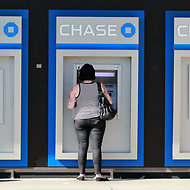The United States economy contracted unexpectedly in the final quarter of 2012, hurt by weaker exports, a drop in military spending and a slower buildup in inventories.
The Commerce Department said Wednesday that economic output in the quarter fell at an annual rate of 0.1 percent, compared with growth of a 3.1 percent pace in the third quarter.
It marked the economy’s worst performance since the second quarter of 2009.
The third-quarter figures had been bolstered by a big jump in inventories, so part of the slowdown was expected as businesses eased back in the fourth quarter. Still, the magnitude of the pullback caught economists by surprise.
Businesses may also have cut back on production because of the fiscal uncertainty in Washington, economists said. In addition, exports have been hurt by slower growth overseas, especially in Europe.
Before Wednesday’s announcement, the consensus estimate among economists for fourth-quarter growth stood at 1.1 percent.
Because data for exports and inventories tends to be volatile, there was a wide range in the predictions. For example, while JPMorgan anticipated growth of 0.4 percent for the fourth quarter, Barclays expected a 1.5 percent increase.
This was the Commerce Department’s first estimate of fourth-quarter growth; revisions are due in February and March, so the final figure could go up or down significantly.
But economists expect that slow growth has continued into the first quarter of 2013, with the consensus estimate currently calling for output to rise at an annual rate of 1.5 percent.
Consumers have been more cautious recently, especially because of a tw0-percentage-point increase in payroll taxes beginning this month that will cost a worker earning $50,000 a year an extra $1,000 annually. That was reflected in a consumer confidence survey released Tuesday by the Conference Board, which reported a sharp downturn in January that it attributed in part to financial anxiety arising from a reduction in take-home pay.
Article source: http://www.nytimes.com/2013/01/31/business/economy/us-economy-unexpectedly-contracted-in-fourth-quarter.html?partner=rss&emc=rss
